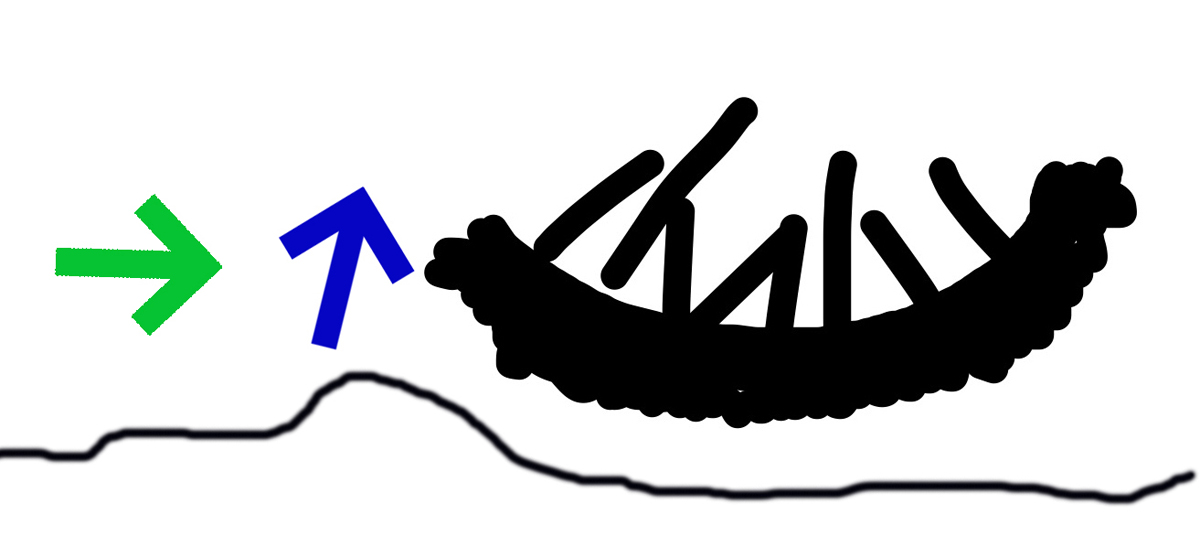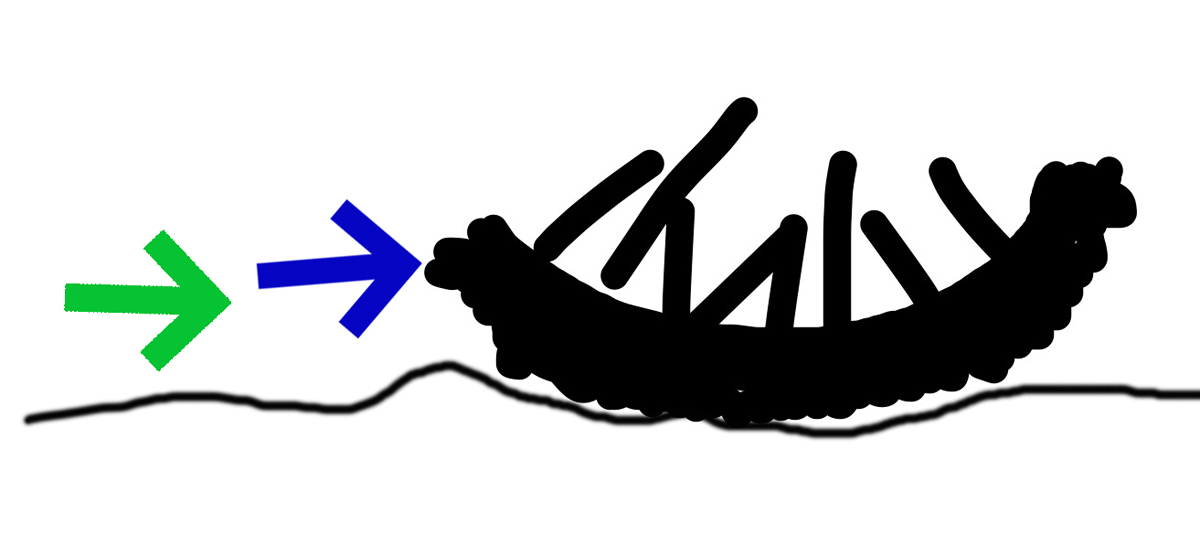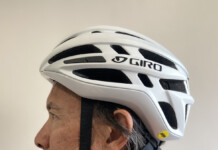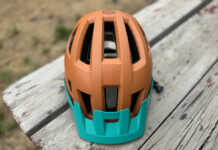By Eric Ramirez — As my 4.8” wide fat bike tire crested the edge of a combo moose-horse-hoof-post-hole (made worse by a hiker) in the groomed track near Dutch Hollow, I knew I was in for a rough tumble. I envisioned the hole swallowing my wheel and catapulting my head into the next hole. Managing to lift the front end just a little, the wheel slammed into the opposite edge of the gargantuan hole. Ugh, that was rough. But I wasn’t done managing the onslaught of a trail gauntlet. Somehow, I hung on.
The Rigid Norm
During several stints in my fat-bike-riding career, I have said and been told, “One does not need suspension on a fat-bike; those big tires absorb everything.” These days, after going back and forth with suspension and rigid forks, I don’t feel like that’s entirely true. The tires absorb much of trail chatter and can track well over uneven surfaces. That’s about it.

With the proliferation of groomed single-track, riding a bike without suspension seems like a no-brainer. Sharing the trail with only other fat bikers, we could generally get away with this. But we don’t. Often, we share the trail with other types of trail users. Obviously, animals like them too. If you find yourself exploring new trails stomped in by snowshoers and other hikers, it likely won’t be that smooth. In the above story, which was by far my worst experience, my rigid fork held up, but it hurt.
Despite the comfort – or discomfort – on the trail, we’re bound to become more confident and better riders on snow. We’ll get used to the grip; used to the snow. As a result, we’ll go faster. That’s when surprises happen even quicker. A bump in a snowy berm or corner can cause a rigid fork to come down harsh, hopefully not blowing you off the trail.
When a wheel is bouncing off the ground, with rider and bike as well, the amount of control you have is limited. This is the trouble with having no suspension. Not only is there no steering nor braking when wheels fly, there’s also a loss of momentum in the form of upward movement. I’ve made a couple high quality sketches to show what I mean here (figures 1 and 2).
Suspension – Comfort & Control
One of the chief benefits of using any form of suspension is comfort through bump absorption. Other benefits: maintained speed, positive steering on rough trails, and stable braking over bumpy terrain. As you might imagine, if you enter a bumpy corner, adding suspension to the equation can help the front wheel track better. Of course, there will be the random, deep post-hole where suspension gives you a margin of error. All these benefits are general to suspension.

Should a winter trail rider add these characteristics to a fat bike? I believe it makes sense to do so. I also believe that a suspension fork adds a degree of playfulness to an already fun-to-ride bike.
However, even with so many upsides there’s still an argument for maintaining a rigid fork. Most rigid fat bike forks are very, very lightweight. Replacing one with a suspension fork will absolutely add a few pounds to your rig and it will set you back several hundred bucks. Then add the inconvenience of annual suspension maintenance. From purists to novices, some feel like the rigid fork fulfills the task and so the cost does not outweigh the benefits.
For me, even the most marginal gain from adding suspension seems worth the cost. However, I have found the gains are not marginal. I’ve gone back and forth and settled on having a suspension fork on my fat bike. You might have been waiting for an article like this to tip the scale in favor of something you have been thinking about for a few winters.
Many cyclists and industry folk said the fat bike wouldn’t catch on. Yet here we are with winter trail riding popping up all over. It’s a progressive idea. Adding the advantages of suspension to a bike just makes sense, even if that bike has 5-inch-wide tires where the accepted norm has been “rigid.”
Eric has about 20 years experience working on bikes, starting in Park City. Today he’s a head technician at a shop.









I wonder if a Lauf fork might be a good compromise. A friend of mine has one on his fat bike and he swears by it. Super light, requires no maintenance, and unaffected by low temps.
I rented a fat bike (no suspension) down in Palm Springs. In the smooth sand it was terrific. I could float through the bottomless stretches with no problem. In the gravelly segments it was still fairly smooth. But once things got into rocky areas(1 inch plus) the vibration is transmitted to the handlebars. The bigger stuff is really tiring after awhile because there is no relief from the pounding and it really affects the handling. In fact I would have preferred to have my full suspension and walk through the sand pits. A few pounds for a front fork is a tradeoff I would gladly make.
I’ve also wondered about the Lauf. It makes tons of sense and seems to be resilient enough. However, I have yet to try one myself.
@Russ – Your experience rings pretty true, especially for desert riding. I promise that if you’d had a suspension fork on that fat bike you’d have had an entirely different trip out there!
Comments are closed.